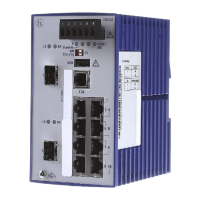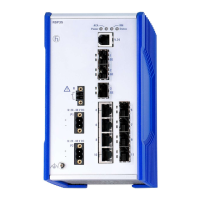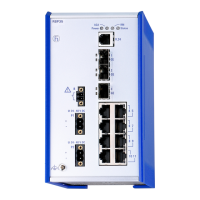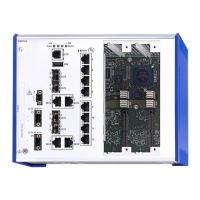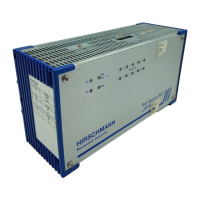Ring/Network coupling
78
5.2
Preparing a Ring/Network coupling
Redundanz L2P
Release
5.0
04/09
The displays in the “Select port” frame mean (see fig. 38):
– “Port mode”: The port is either active or in stand-by mode.
– “Port state”: The port is either connected or not connected.
– “IP Address”: The IP address of the partner, if the partner is already
operating in the network.
The displays in the “Information” frame mean (see fig. 38):
– “Redundancy existing”: One of the lines affected can fail, as a
redundant line will then take over the function of the failed line.
– “Configuration failure”: The function is incomplete or incorrectly
configured.
To avoid continuous loops, the Switch sets the port state of the coupling
port to “off” if you:
– switch off operation or
– change the configuration
while the connections are in operation at these ports.
Note: The following settings are required for the coupling ports (you
select the Basic Settings:Port Configuration dialog):
– Port: on
– Automatic configuration (autonegotiation):
on for twisted-pair connections
– Manual configuration: 100 Mbit/s FDX
for glass fiber connections
Note: If VLANS are configured, note the VLAN configuration of the
coupling and partner coupling ports.
In the Network/Ring Coupling configuration, select for the coupling and
partner coupling ports
– VLAN ID 1 and “Ingress Filtering” disabled in the port table and
– VLAN membership U in the static VLAN table.
Redundancy mode
In the “Redundancy Mode” frame, select (see fig. 40)
– “Redundant Ring/Network Coupling” or
– “Extended Redundancy”.
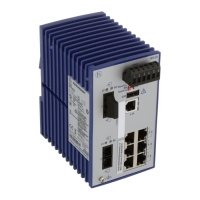
